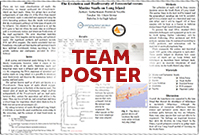

- Program:
- Barcode Long Island
- Year:
- 2022-23
- Research Topic:
- Biodiversity & trade
- Taxonomic Group Studied:
- Animals: Invertebrate
Project:
DNA Barcoding of Aquatic Macroinvertebrates
- Students:
- Makena Wood, Szonja Gabor, Pasha Wray, Ava DiDonna
- School:
- Eastport South Manor Junior-Senior High School, Suffolk
- Mentors:
- Robert Bolen
Abstract:
We plan to measure biodiversity by comparing this year's results to results of prior years. By comparing the species from this year to previous years, we can look for changes in biodiversity. We collected many dragonfly nymphs , amphipods, 1 leech, 3 snails, and what look like 4 snail nymphs (these snails were within a larger snail). The goal is to determine the identity of all samples, and which samples are native, invasive, and if any pose a threat to the ecosystem. Invasive species have a negative effect on the biodiversity of ecosystems. Invasive species compete with native species for resources and habitats which can cause the loss of native plants and animals furthermore, reducing biodiversity. Some examples of disease carrying and transmitting organisms in the Peconic River include Mystery Snails carrying a parasite called Rat Lungworm, and Leeches potentially may carry diseases such as erysipelas and tetanus. Some of the collected samples function as a biological control specie

